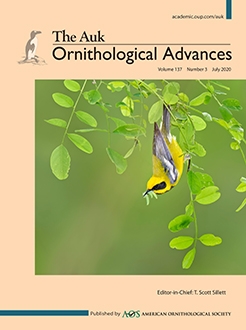Haemosporidian parasites of the genera Plasmodium, Haemoproteus, and Leucocytozoon are among the best studied parasites of Neotropical birds. Here, we describe variation in haemosporidian prevalence (i.e. the proportion of infected individuals in a sampled population) in Neotropical birds. We review correlates of haemosporidian prevalence (including several avian life-history traits, climate, and season) and the population and evolutionary consequences of infection for Neotropical birds. We find that prevalence varies among avian taxonomic families, genera, and even among species within the same genus, suggesting that prevalence reflects multiple factors, some of which (e.g., avian incubation period) are associated with avian family-level variation in prevalence while others (e.g., avian abundance) are associated with variation in prevalence among closely related host species. We find few correlates of prevalence that have been consistently demonstrated across studies. Prevalence in populations of many Neotropical birds has been estimated by microscopic examination of blood smears, which affords limited opportunity for comparison with data generated by molecular methods. However, at one site in the Brazilian Cerrado for which we have data, prevalence determined by microscopy does not correlate with prevalence determined by molecular methods for Plasmodium, but the 2 data types are positively correlated for Haemoproteus. Haemosporidians have been hypothesized to play a role in avian sexual selection, and we find the prevalence of Haemoproteus to be lower in polygynous species than in socially monogamous species in the Neotropics, confirming a pattern shown previously among Nearctic birds.
LAY SUMMARY
Many Neotropical birds are infected by insect-vectored blood parasites belonging to the order Haemosporida. These haemosporidian parasites, commonly known as “avian malaria” parasites, infect bird species to varying degrees.
The proportion of birds in a population that are infected (parasite prevalence) has been related to variation in several avian traits, including length of incubation period and nesting height, climate, and other factors, but the patterns are not consistent among studies.
We review proposed causes of variation in haemosporidian prevalence and potential consequences of infection for bird populations. Haemosporidian parasites have plausibly been involved in the evolution of colorful plumage and mating systems in birds.
Here we find evidence for lower prevalence of haemosporidian infection associated with polygyny (where individual males mate with multiple females) in the Neotropics.
Avian haemosporidian parasites exert an important influence on the health and adaptive responses of Neotropical birds.






